
St. Kilian
St. Kilian’s N.S.

St. Kilian
|
St. Kilian |
St. Kilian’s N.S. |
St. Kilian |
|
Nature
News
Wild Flowers
|
|||
 |
The Cow Parsley by Shona and Heather It is in flower in May. The petals are white and the stem is green. The leaves are slightly hairy. |
|||
|
|
||||
|
Germander Speedwell by Amy, Laura and Colin The leaves
of the germander speedwell are heart shaped and hairy and the flowers
are bright blue. The stem on the plant runs along the ground. It flowers
from April until the end of June. The
flowers never come up on a cold day.
It is common in open woods and in hedge banks. We find lots of it around our school. The foxglove
and the snapdragon are in the same family as the speedwell. |
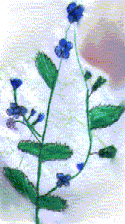 |
|||
|
|
||||
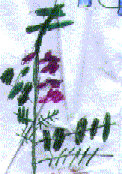 |
Vetch by Áine and Maeve Vetch has
pinky purple flowers. It has a long stem with leaves on it. There is more than one flower on each stem. Vetch has seeds that look like peas in a
pod.
We have lots of vetch near our school. It grows in hedges and shady places. |
|||
|
|
||||
|
It is a deep
blue colour. |
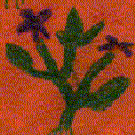 |
|||
|
You have
to look carefully The dog violet
is common throughout Ireland. It
blossoms from March to June. |
||||
|
|
||||
 |
Daisy
comes from “day’s eye.” The daisy
is a common weed of lawns so gardeners don’t like them. It grows in grassy places throughout Ireland. It flowers practically the whole year. |
|||
|
Children
like making daisy chains. Once,
a group of us made daisy chain longer than 6 metres.
|
||||
|
|
||||
|
Herb Robert
has a very hairy stem and an unpleasant smell. Animals avoid it. In the Middle
Ages, its juice was used to stop bleeding from wounds and for various
ailments of humans and animals. |
 |
|||
|
|
||||
 |
The
dandelion has hollow stems, which contain a sticky white juice. It has a long trap root that is difficult to dig out of the ground.
They are weeds. There are
three different kinds of dandelion. These
are, lesser dandelion, marissa dandelion and the common dandelion.
We have mostly common dandelion around our school. |
|||
|
|
||||
|
Bluebells
are a purple-blue colour. The
flowers look like bells. Their
heads droop. They have long stems so they are able to
see around themselves. They grow
near our school. |
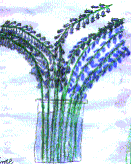 |
|||
| They are found
in hedges and shrubs and are very common in gardens. They feed on greenfly so gardeners like them.
The nest in holes, sometimes in places such as letterboxes. |
||||
|
|
||||
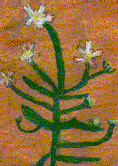 |
Greater Stichwort by Amy, Laura and Colin The
stem of greater stichwort is slender and weak.
There are five petals on each flower.
It is a white flower. The
rich green leaves are lanced-shaped and rough. Greater stichwort
is a common plant in ditches and hedgerows.
It flowers from April to June.
Laura found greater stichwort in a ditch near her house.
It was in a shady place. |
|||